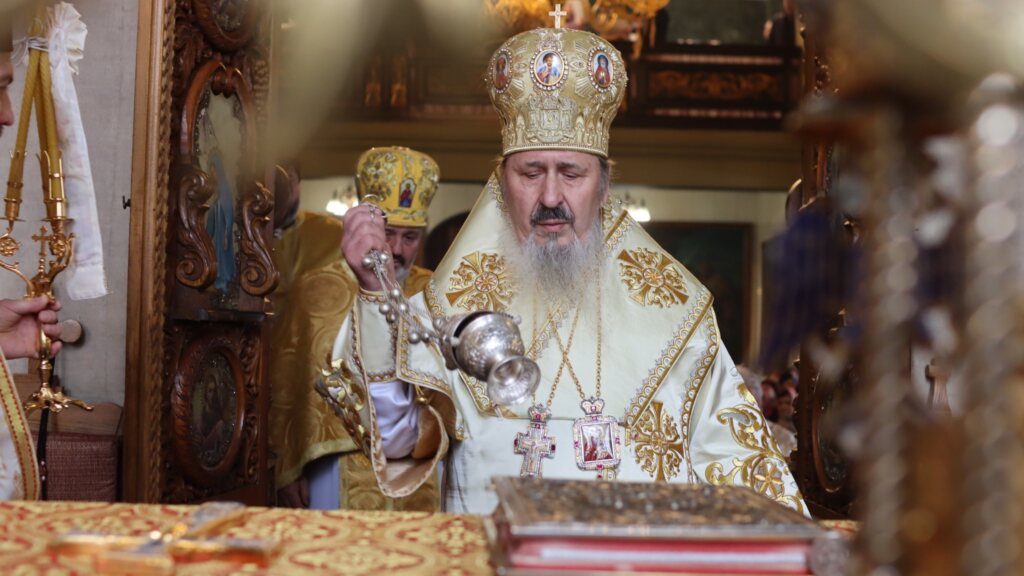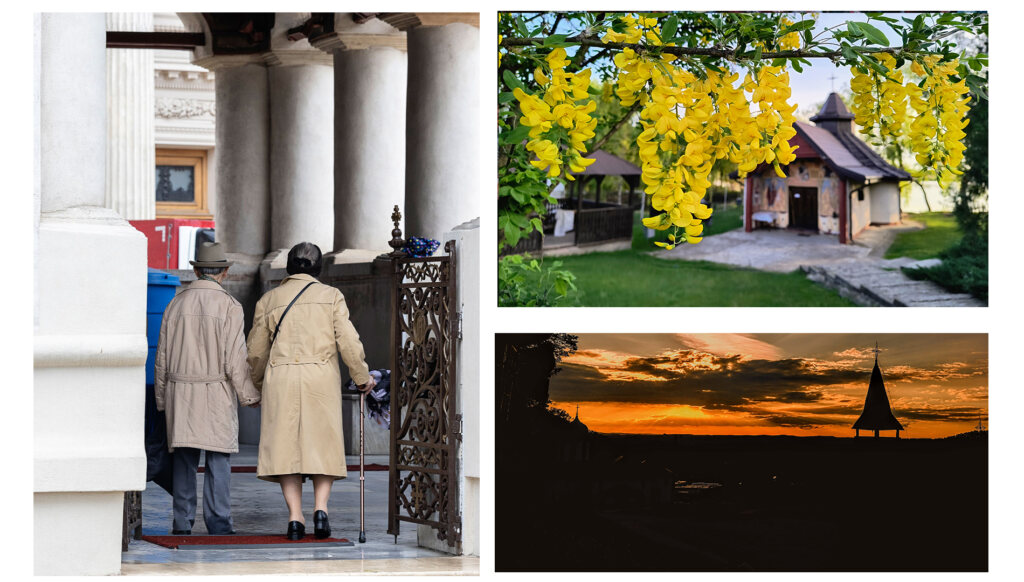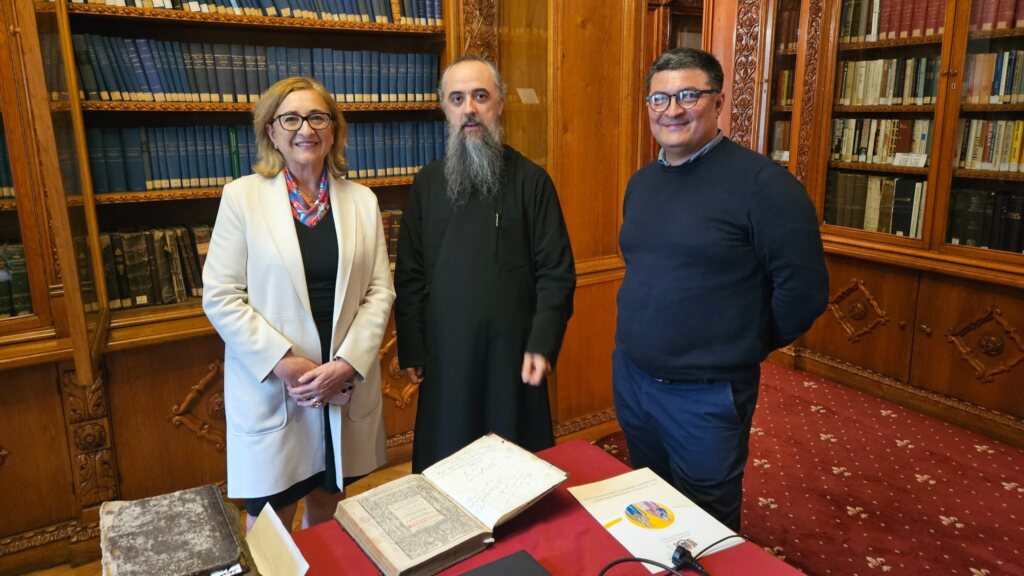Orthodox Calendar March 26
Synaxis of the Holy Archangel Gabriel
On the Leavetaking of the Feast of the Annunciation, the Church commemorates the Archangel Gabriel, who announced the great mystery of the Incarnation of Christ to the Virgin Mary. There is no period of Afterfeast due to Great Lent.
The Archangel Gabriel was chosen by the Lord to announce to the Virgin Mary about the Incarnation of the Son of God from Her, to the great rejoicing of all mankind.
Therefore, on the day after the Feast of the Annunciation, the day on which the All-Pure Virgin is glorified, we give thanks to the Lord and we venerate His messenger Gabriel, who contributed to the mystery of our salvation.
Gabriel, the holy Archistrategos (Leader of the Heavenly Hosts), is a faithful servant of the Almighty God.
He announced the future Incarnation of the Son of God to those of the Old Testament; he inspired the Prophet Moses to write the Pentateuch (first five books of the Old Testament), he announced the coming tribulations of the Chosen People to the Prophet Daniel (Dan. 8:16, 9:21-24); he appeared to Saint Anna (July 25) with the news that she would give birth to the Virgin Mary.
The holy Archangel Gabriel remained with the Holy Virgin Mary when She was a child in the Temple of Jerusalem, and watched over Her throughout Her earthly life. He appeared to the Priest Zachariah, foretelling the birth of the Forerunner of the Lord, Saint John the Baptist.
The Lord sent him to Saint Joseph the Betrothed in a dream, to reveal to him the mystery of the Incarnation of the Son of God from the All-Pure Virgin Mary, and warned him of the wicked intentions of Herod, ordering him to flee into Egypt with the divine Infant and His Mother.
When the Lord prayed in the Garden of Gethsemane before His Passion, the Archangel Gabriel, whose very name signifies “Man of God” (Luke. 22:43), was sent from Heaven to strengthen Him.
The Myrrh-Bearing Women heard from the Archangel the joyous news of Christ’s Resurrection (Mt.28:1-7, Mark 16:1-8).
Mindful of the manifold appearances of the holy Archangel Gabriel and of his zealous fulfilling of God’s will, and confessing his intercession for Christians before the Lord, the Orthodox Church calls upon its children to pray to the great Archangel with faith and love.
The Synaxis of the Holy Archangel Gabriel is also celebrated on July 13. All the angels are commemorated on November 8.
Troparion — Tone 4
Gabriel, commander of the heavenly hosts, / we who are unworthy beseech you, / by your prayers encompass us beneath the wings of your immaterial glory, / and faithfully preserve us who fall down and cry to you: / “Deliver us from all harm, for you are the commander of the powers on high!”
Martyr Montanus the Presbyter of Singidunum, and his wife Maxima
Saint Maxima and her priest-husband, Saint Montanus, lived in Singidunum (present-day Belgrade) in the fourth century during the time of Emperor Diocletian’s persecution of Christians. The Emperor’s deputy, Galerius, issued an edict requiring Christians to offer sacrifices to the idols.
The pious couple refused, and continued to conduct their lives according to the Gospel of Jesus Christ. They traveled to the west, to Sirmium, in order to distance themselves from the seat of power. However, in the year 304, they were seized by Roman soldiers and brought to stand trial before Governor Probus.
As they stood before the governor on a bridge overlooking the Savva River, the captives were given the choice of sacrifice to the idols or death. Saint Montanus showed great heroism and explained that if he were to sacrifice to the idols, it would be tantamount to rejecting Jesus Christ as God and Lord of heaven and earth, and he refused to comply.
Frustrated, Probus tried to persuade Saint Maxima to deny Christ. Much to the surprise of the crowd, her fidelity and apostolic courage proved to be as great, if not greater, than her husband’s. Saint Maxima defended her faith so convincingly and with such eloquent zeal that Probus cut the trial short, fearing mass conversions to Christianity.
Saints Maxima and Montanus were beheaded by the sword, and their remains were thrown into the Savva River. The faithful, and those converted by the zeal of the holy couple, willingly endangered their lives in order to rescue the bodies and heads of the martyrs from the river. The relics were transported to Rome and interred in the Catacombs of Saint Priscilla on the Salarian Way where they remained for 1,500 years.
Troparion — Tone 3
Your holy martyrs Montanus and Maxima, O Lord, / through their sufferings have received incorruptible crowns from You, our God. / For having Your strength, they laid low their adversaries, / and shattered the powerless boldness of demons. / Through their intercessions, save our souls!
Troparion — Tone 4
Today is the beginning of our salvation, / the revelation of the eternal mystery! / The Son of God becomes the Son of the Virgin / as Gabriel announces the coming of Grace. / Together with him let us cry to the Theotokos: / Rejoice, O Full of Grace, / the Lord is with You!

The 26 Martyrs from the Gothic Church
Ancient synaxaria of the Gothic Church recount the martyrdom of twenty-six Christians in the time of the emperors Valentinian, Valens, and Gratian.
The historian Sozomen says that King Athanaric was enraged to see his subjects embracing Christianity because of the preaching of the Arian bishop Ulfilas. So, he ordered many of them to be tortured and executed, often without a trial.
King Athanaric’s ministers placed a statue in a chariot and paraded it before the tents which Christians used for church services. Those who worshiped the idol and offered sacrifice were spared, the rest were burned alive in the tent.
Jungerich gave orders to burn down a church during divine services. In the fiery inferno 308 people perished, of whom only twenty-one are known by name. There was also an anonymous man who came to the tent and confessed Christ. He was martyred with the others. Different manuscripts give variants of their names.
In the reign of Valentinian and Theodosius (383-392), the Gothic king’s widow Gaatha (who was an Orthodox Christian) and her daughter Duclida gathered up the relics of the holy martyrs and brought them to Syria with the help of some priests and a layman named Thyellas.
Gaatha later returned to her native land, where she was stoned and died as a martyr, along with her son Agathon.
The relics of the holy martyrs were left to Duclida, who went to Cyzicus in Asia Minor and gave some of the relics for the founding of a church. Saint Duclida died in peace.
The holy martyrs were commemorated on October 23 on the Gothic calendars.





